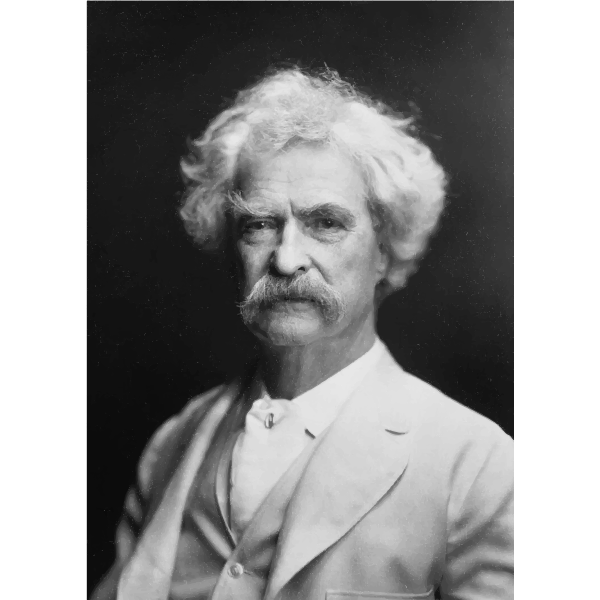My podcast today will both provide the weekend weather forecast and talk about the history of wildfires in the Pacific Northwest.
Wildfires and associated smoke are a major concern in the region, and some media, politicians, and others have suggested that wildfires and wildfire smoke are not normal and are a potent sign of a changing climate.
They are not correct. Wildfires and their smoke are a natural part of the Northwest ecosystem.
What was not normal was the period of suppressed fire during the later portion of the 20th century.
A good illustration is the visit of Mark Twain in August 1895, a summer in which the U.S. Weather Bureau noted "the sun was almost entirely obscured by excessive smoke from wildfires." Twain was invited to speak in Olympia, where the chairman of the reception committee apologized for "smoke so dense that you cannot see our mountains and our forests, which are now on fire". Twain retorted
“As for the smoke, I do not so much mind, I am accustomed to that. I am a perpetual smoker myself.”
A Region of Fire
There is a great deal of research, some of it based on charcoal deposits underground and others from tree-ring cores, that fire is a regular feature of our region for millennia.
This work has found that westside forests typically burn every few hundred years and eastside forests every decade or so. Wildfire is an essential part of Northwest ecology, something well-known to Native Americans, who regularly started fires to improve the productivity of the landscape.
When European explorers and settlers reached the region hundreds of years ago, they frequently commented about summer wildfires.
For example, during August 1788, European explorers sailing up the Northwest coast noted massive smoke from great fires (Indians, Fire and the Land in the Pacific Northwest, edited by Robert Boyd, 1999)
The non-Native American settlers that entered the Northwest during the early to mid-1800s noted frequent fires and smoky summers. For example, in September 1844, a wildfire descended the hills and nearly reached Fort Vancouver, north of present-day Portland.
A year later, the Great Fire of 1845 burned through the northern half of Lincoln County and the southern half of Tillamook County, Oregon, destroying much of the old-growth timber of the area (1.5 million acres). In 1853, the Yaquina fire engulfed 450,000 acres, followed by the Silverton Fire of 1865 (covering million acres) and the 1868 Coos Fire (300,000 acres), all on the western side of Oregon.
September 1868 was a very bad year for fires and smoke. Residents of Olympia, Portland, and Oregon City were forced to use lamps in the daytime to carry on normal activities because the smoke was so dense and dark.
I could provide dozens of reports in newspapers and journals documenting the typical smoky summers of the Pacific Northwest, on both sides of the Cascades.
This smoky regime continued into the early 20th century, until the great wildfire of 1910, the Big Burn, seared a large area of eastern WA, northern Idaho, and western Montana. An event that killed 87 people. That fire led to the invigoration of the U.S. Forest Service and the goal of actively suppressing fires.
But it wasn't until the 1940s, that the technological capability to massively and effectively suppress fires was in place and the result was a collapse of fire area in the western U.S. The era of Smokey Bear had begun.
A plot of Oregon wildfires below tells the story. A huge decline in wildfire area around 1940. This collapse in fires was not climate change, but human intervention.
During the past few decades (the 1970s to today) more fire has returned to the Northwest landscape but NOTHING like the wildfires before human intervention.
- Some of the wildfire increase is due to the policy of allowing some fires to burn (based on understanding the important ecological role of fire).
- Some of it is due to increased human ignition of fires (from our electrical infrastructure, arson, and accidental fire starts).
- Some of it is due to the massive invasion of foreign flammable invasive grasses into our region.
- Much of it is due to the massive changes in our forests, with fire suppression and poor forest practices, leading to unnaturally dense timber stands littered with past logging debris that burn so intensely and catastrophically that we cannot control them.
- Some of it might be associated with the relatively minor global warming (1-2F) that has influenced our region.
I believe the evidence is that the climate change component is a small player today in increasing wildfire frequency, with the other factors being more important.
In any case...and the important message in this blog... is that wildfire is a natural element of Northwest ecology and meteorology and that the 50-year period of suppressed wildfire and smoke are anomalies from the natural state of the region.
To listen to my podcast, use the link below or access it through your favorite podcast service.
Some major podcast servers:
Like the podcast? Support on Patreon











Comments
Post a Comment